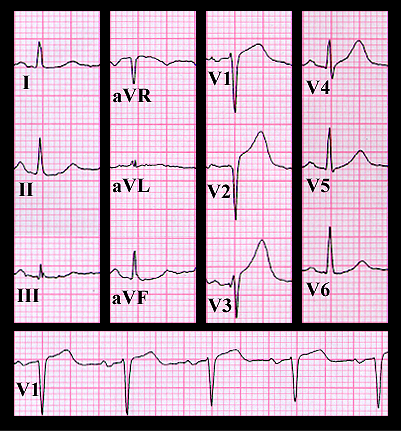
The ECG shown here is from of a 74 year old female. It was recorded in the emergency department of her local hospital within a few hours of the onset of chest pain and shortness of breath. No heart murmurs were detected. The cardiogram shows sinus rhythm with a rate of 100 per minute (RR interval = 0.60 seconds). The PR interval and QRS duration are normal. There is 2-3 mm of ST segment elevation in leads V2 and V3 and about 1mm ST segment elevation in lead V4 with prominent upright T waves in these leads. The changes are consistent with an acute coronary event involving the antero-septal region and the biomarkers indicative of myocardial necrosis were elevated.
